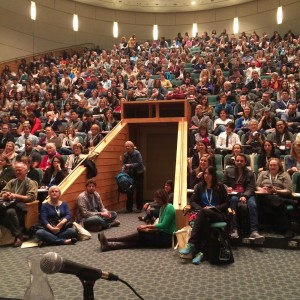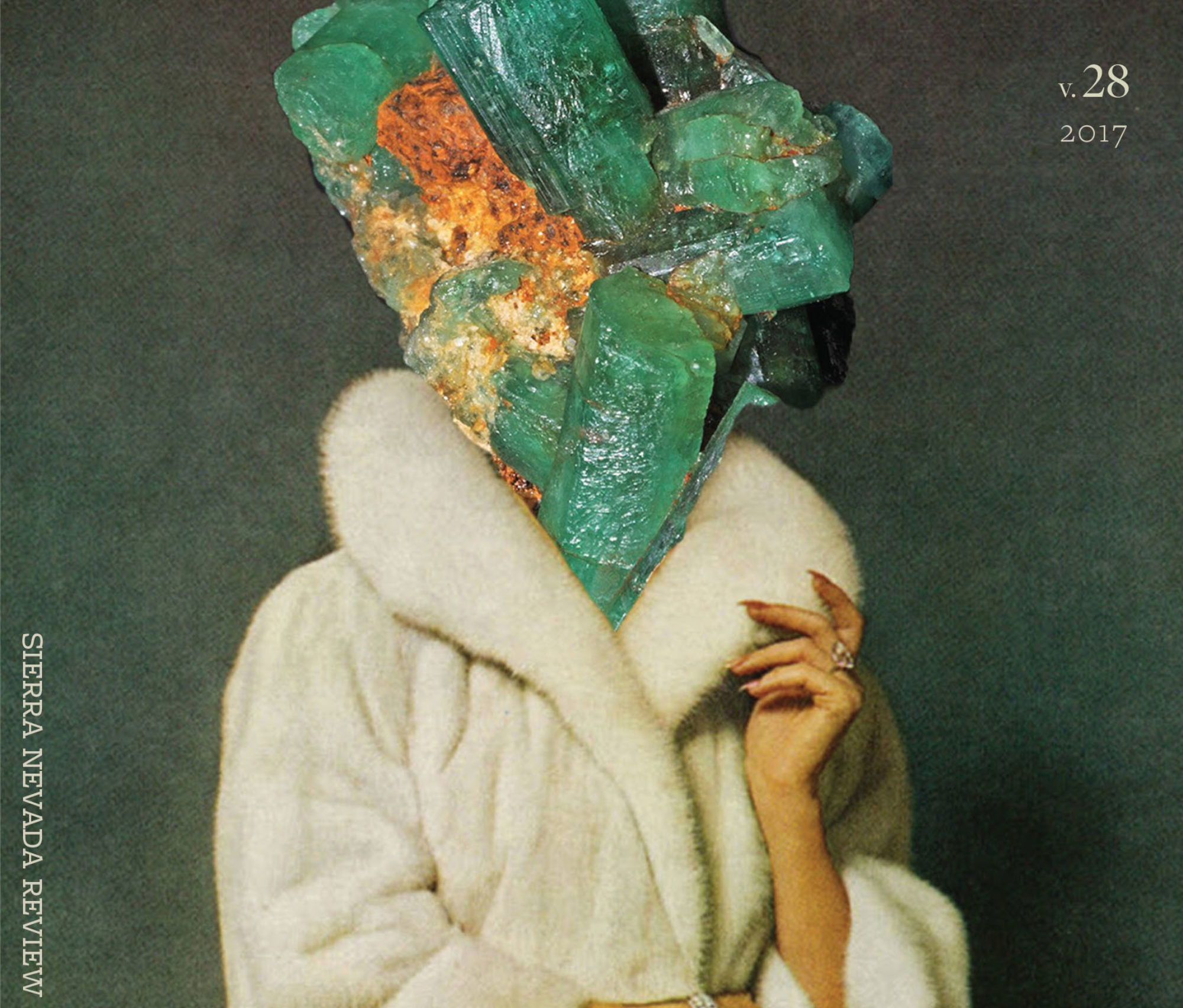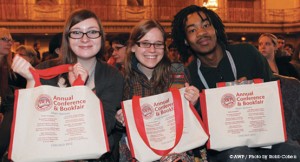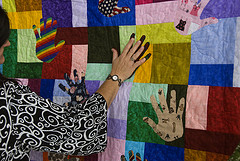By Rebecca Victoria Ramirez
For my first time ever I had the privilege of attending this year’s AWP Conference and Bookfair in Minneapolis at the Minneapolis Convention Center (MCC). The conference lasted three days with events beginning at 9:00 a.m. daily. On some days the events were scheduled well into the evening, beginning at 10:00 p.m. and ending at midnight.
In addition to the readings and panels scheduled throughout the day there is the bookfair; this year’s was housed in the MCC’s exhibit hall, a 475,000 square foot area. There were over 500 booths which consisted of colleges advertising their MFA programs, journals and magazines selling their latest editions and announcing calls for submissions, publisher selling books and advertising author signings, and company reps trying to convince beginning writers that they need an agent.
With a considerable selection of events to choose from, setting up my schedule proved to be very difficult. There is an AWP app, however, which can be downloaded to your smart phone prior to the conference and that makes this task a little easier. Most events fell into two categories, panels and readings, and were scheduled to last a little over an hour with fifteen-minute breaks in between giving you time to rush from one to the next. But at any hour there might be 30 or more events to choose from.
categories, panels and readings, and were scheduled to last a little over an hour with fifteen-minute breaks in between giving you time to rush from one to the next. But at any hour there might be 30 or more events to choose from.
One panel I attended, “Fashioning a Text,” discussed how structure in writing is often regarded as secondary to voice and content. However, through readings of their own texts, and that of others, the panel of essayists, journalists, and memoirists demonstrated how structure itself can be artifice. Writers often utilize structure to find meaning in their writing and it is not solely the writer’s voice but also the structure of their writing that is idiosyncratic the panel explained. This called to mind a fascinating memoir I had just read by Rebecca Solnit, The Faraway Nearby.
The focus of Solnit’s memoir is the deterioration of her mother’s health. Within its pages is found story upon story, one memory that opens into another. Titles of each section speak to key moments in Solnit’s life and of the relationship between her and her mother. It has often been said that in our last days we return to our former state, to that of a child or infant, our children now the parents, responsible for feedings and toileting. The structure of Solnit’s memoir speaks to this descent, returning to the memories that began the memoir in its final pages. There is also a literal arc structured from the titles of each section that can be seen in the table of contents.
Another panel I attended “Life After the MFA,” discussed the employment opportunities available to those with an MFA in creative writing. Each of the three members of the panel briefly mentioned the possibility of writing internships, editing journals, and publishing. However, all three found their way to a teaching position. This wasn’t surprising as all three had started off as teachers, working in the K-12 system prior to their degree, but it was a little disconcerting for me because I had attended the event with the anticipation that the panel would present many more opportunities other than teaching. That seems like a pretty obvious option and I wanted to know what more there is.
Overall the event was a wonderful experience. Learning to navigate the venue can prove to be difficult as well managing your schedule efficiently but it is definitely worth attending. The wealth of information you’ll come away with and the opportunity to meet one of your favorite writers is invaluable. I will certainly attend next year’s conference.
For more information about next year’s AWP, scheduled at the convention center in Los Angeles, California, please visit:








